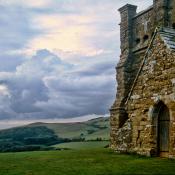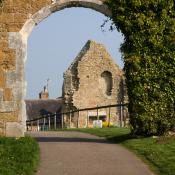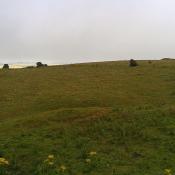The only place in the world where you are able to walk through the heart of a colony of nesting Mute Swans.
At the end of the last Ice Age meltwater flooded behind the already-formed Chesil Beach leaving eight miles of shallow brackish water sheltered from the storms that sweep through Lyme Bay. More than three hundred different species of waterfowl live in the Fleet Lagoon, now protected under various national and international conservation agreements, including dark-bellied Brent Geese, common Greenshank, red-breasted Merganser and little Egrets. It is also home to the Abbotsbury Swannery, the only managed colony of nesting mute swans in the world.
The swannery dates back to the eleventh century when King Canute established a Benedictine monastery by the side of the lagoon and the monks managed a colony of swans in order to use their meat for food. The monastery was dissolved in 1539, but the estate, including the swannery, was purchased by the Strangeways family, who have held onto it for fifteen generations. Today the swannery is managed as a tourist attraction.
A display in the Decoyman's House explains how the colony has changed over the centuries. The swans are uncaged but so inured to the presence of humans that they will even allow a close approach when they are nesting. Cygnets hatch from mid-May until late-June and visitors are occasionally allowed to hold them under the supervision of the swanherds. Spectacular daily feeding sessions take place at midday and four o'clock.
Once every two years at the end of July, when the swans are moulting and flightless, fifty canoes take part in an operation to round them up so that they can be examined, weighed, measured and counted. At the last count there were around six hundred swans.
The Abbotsbury Swannery is fourteen kilometers from Weymouth, on the coastal road from Weymouth to Bridport. There is a cafe, shop and play area on the site as well as the largest willow maze in Dorset. Some of the ruins from the original Benedictine monastery are still visible around St Nicholas' church in the village.




